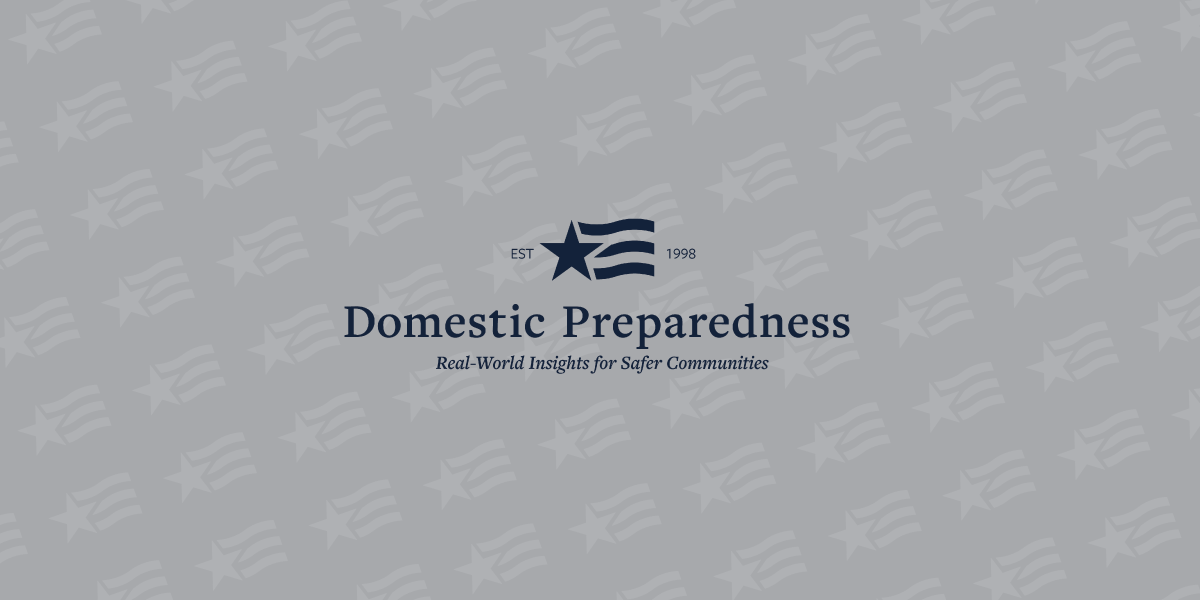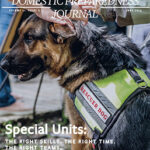For any political jurisdiction to effectively and quickly recover from an emergency, a key element in planning is to first understand the potential hazards facing that jurisdiction. Vulnerabilities of the current infrastructure and processes, as well as the resources available or needed in the community, are important to consider. Traditionally, this assessment of potential hazards and risks is conducted primarily by emergency management officials and often involves inter- and intra-jurisdictional partners. However, as the role of public health continues to expand as an integral part of the U.S. disaster-response program, the unique perspectives of public health professionals on planning processes and community involvement will ensure that future hazard assessments are more comprehensive and take into consideration the public health impacts involved.
Understanding Multiple Terms and Definitions
There are numerous terms used to describe the process of identifying hazards and analyzing their direct or indirect effects on a specific jurisdiction. Often, these terms are interchangeable, and differ primarily because of traditions within sectors such as the specialized names used for specific tools and resources. The accompanying table provides a quick look at some of the more important terms/definitions and agencies involved.

For the purposes of this article, what might be described as a compound acronym, HRVA (hazard, risk, and vulnerability assessment), will be used, with hazard hereby defined as “an act or condition posing the threat of harm” and risk defined as “the expectation of loss.”
Importance of an HRVA
The initial use of an HRVA can seem daunting, difficult, and not tied to any of the better known realities of public health preparedness. However, this compound assessment could quickly serve as an integral approach to understanding the holistic needs of the entire community – including but not necessarily limited to emergency management, fire/EMS, public safety professionals, and hospitals as well as critical infrastructure and other key physical resources. Following the examples typical of other multi-agency planning processes, the HRVA would and should use collaborative and transparent methods to ensure that all stake-holding partners are involved in its preparation, analysis of findings, and development of mitigation techniques.
The HRVA is a foundational element of hazard mitigation that allows preparedness and emergency-management professionals to set goals based primarily on the public need for protection. Properly used, it also should enhance both public and private agency understanding and awareness and favorably influence the adoption of hazard-mitigation programs. Traditionally, following the continuum used in emergency management, the findings revealed by the HRVA should serve as a basis for resilience and for the development and implementation of effective response and recovery programs throughout the political jurisdiction(s) directly involved.
Greater knowledge and improved understanding of the hazards within a jurisdiction, in neighboring jurisdictions, within the state, and throughout the region, are fundamental requirements for emergency planning. In essence, an HRVA provides a basis for determining the demands on emergency resources that could and probably would occur – preferably prior to the evolution of an incident to an actual crisis. HRVAs also can be used to assess the level of improvement needed for an effective response by any of the institutional entities involved. Although not all of the demands of a potential disaster situation are likely to be anticipated, being aware of the major facilities in a specific geographic area, and the number of persons that may be vulnerable to each type of potential hazard, will help planners: (a) explore the most effective preventive measures that should be taken; and (b) use that information to develop and implement a properly coordinated disaster response plan.
Starting the Planning Process
Existing resources, such as the Hazard Risk Assessment Instrument developed by the UCLA Center for Public Health and Disasters, help guide public-health agencies and organizations to develop risk assessments appropriate for their own communities. It should be emphasized that the planning of the process should not start from scratch, but should be based on both current and previous research, the lessons learned from real events and exercises in the past, and prior hazard vulnerability assessments developed for each specific jurisdiction involved. Much if not all of this information is available at the local or state office of emergency management, a regional FEMA office, a state homeland security department or agency – and, surprisingly perhaps, one or more universities in the region that serve as a Homeland Security Center of Excellence or as a previous CDC (Centers for Disease Control and Prevention) Center for Public Health Preparedness. Effective planning also can reap major benefits by capitalizing on the cumulative knowledge and experience acquired by other public and private groups and organizations in the area.
One of the key factors involved in developing a comprehensive and effective HRVA is ensuring a buy-in, from all potential partners within the jurisdiction. The rule is not to rely simply on receiving approval from agency leadership, but also to seek, and gain, the confidence and advice of an actual working group of professionals dedicated to the same common goal of community resilience. Creation of a working group will be particularly important during the development, analysis, and action-planning stages of the HRVA. Partners must fully commit to operationalizing the mitigation techniques based on the findings from the HRVA and agreed upon by the group.
Understanding the Core Elements of an HRVA
The major components of an HRVA focus on three principal elements: (a) identifying specific hazards; (b) determining the impact that those hazards are likely to have both on the community and on neighboring jurisdictions; and (c) evaluating the possibility – and/or likelihood – of the hazard actually occurring within the community. Usually, but not always, these elements can be further divided into five major “task areas,” as follows:
Commitment and Planning – determine appropriate partners; secure the resources needed; organize an advisory committee; ensure commitment from all of the partner agencies and stakeholders involved; review previous HRVAs, lessons learned, known risks, historical data, and relevant statistics; communicate with neighboring jurisdictions and regions to determine additional partners and resources; and develop an effective work plan with the committee.
Gathering of Risk Information – develop a risk-information checklist (or use an existing template); assign individual committee members to gather information; and document the hazard and vulnerability information gathered.
Identification of Hazards and Vulnerabilities – develop a list of possible hazards and rank them based on probability of occurrence within the community (consider not only manmade but also technological/cyber, environmental, and terrorist hazards); determine the probable impact of those hazards in relation to the numerous vulnerabilities (human impact, interruption of healthcare services, community impact, and impact on the public health agency infrastructure) also likely to be involved; schedule a workshop with all of the stakeholders involved to review initial findings and discuss various incident scenarios; and map the location(s) of not only the hazards but also the vulnerabilities previously discussed.
Development of a Risk Analysis – review the qualitative and quantitative risk-ranking measures used; schedule another committee meeting or workshop to review findings, alleviate discrepancies, and complete any missing risk profiles or priority goals; identify the risk-reduction measures needed to deal with high-risk hazards; discuss the public-health impact of all of the known hazards thus far identified; and consider asking the public and other stakeholders not previously involved to provide input on the final analysis.
Action Planning – using the HRVA, develop an action list with specific timelines established for each of the partner agencies involved to begin mitigation activities; review and update the county/state/regional emergency operations plans; determine a schedule for future committee meetings to discuss the progress made and any tasks or goals not yet accomplished; and develop a plan and start the preparations for a jurisdiction-wide exercise based on findings developed from the HRVA.
The HRVA must take into account, among other variables: (a) the jurisdiction’s geographic location; (b) the possibility of any specific event or incident affecting the community; (c) the potential risks involved in various types of such events and incidents; (d) any relevant historical data that might be available; and (e) the community’s proximity to local/regional high-risk locations (e.g., a chemical or nuclear plant, a major port or coastal area, popular tourist attractions, key government facilities, and the local population density).
The level of vulnerability to which jurisdictions and their populations may be exposed to a specific hazard or event – or combination of events – can be summarized as a function of: (a) The potential or real hazards (flood, fire, disease pandemic) on the “most likely” list; (b) The attributes (e.g., structural design, size, age, location) of the public/private critical infrastructure facilities in the area; (c) The staffing and various operational modes of those facilities; (d) The “likelihood” – i.e., the odds for or against, based on local and regional history – of a specific hazard endangering the community; and (e) the probable damage (measured in deaths, injuries, and economic losses) caused by each type of hazard.
Only after all of these step-by-step processes and procedures have been completed can appropriate and effective response, recovery, resilience, and overall mitigation and preparedness plans (for example, evacuation routes, the stockpiling of various goods and supplies, the call-up of reserve staff, and the development of various Memoranda of Understanding and/or Mutual-Aid Agreements) be completed.
To briefly summarize: During the past decade, most if not quite all U.S. public health agencies and organizations have evolved (and improved) significantly in their preparedness and response capabilities and have now reached the point where they should always be included during the planning process along with the more traditional emergency-response agencies (emergency management, fire-service, EMS, law enforcement, and public safety). The various types of emergencies that health departments plan for and respond to run the gamut from disease outbreaks to a broad spectrum of natural disasters. It is in that context that a well-researched HRVA should be an integral component of a fully prepared health work force.
Conducting HRVAs (or elements of one) are now often requirements for businesses considered to be critical infrastructure/key resources. Bringing an understanding of all Emergency Support Function (ESF) #8 elements for Public Health and Medical Services to the HRVA is the responsibility of public health entities. By “coming to the table,” public health entities will help ensure that the HRVA is as comprehensive as possible.

Raphael M. Barishansky
Raphael M. Barishansky, DrPH, is a public health and emergency medical services (EMS) leader with more than 30 years of experience in a variety of systems and agencies in positions of increasing responsibility. Currently, he is a consultant providing his unique perspective and multi-faceted public health and EMS expertise to various organizations. His most recent position prior to this was as the Deputy Secretary for Health Preparedness and Community Protection at the Pennsylvania Department of Health, a role he recently left after several years. Mr. Barishansky recently completed a Doctorate in Public Health (DrPH) at the Fairbanks School of Public Health at Indiana University. He holds a Bachelor of Arts degree from Touro College, a Master of Public Health degree from New York Medical College, and a Master of Science in Homeland Security Studies from Long Island University. His publications have appeared in various trade and academic journals, and he is a frequent presenter at various state, national, and international conferences.
- Raphael M. Barishanskyhttps://domprep.com/author/raphael-m-barishansky
- Raphael M. Barishanskyhttps://domprep.com/author/raphael-m-barishansky
- Raphael M. Barishanskyhttps://domprep.com/author/raphael-m-barishansky
- Raphael M. Barishanskyhttps://domprep.com/author/raphael-m-barishansky

Audrey Mazurek
Audrey Mazurek, MS, has worked at all levels of government for nearly 20 years in public health and healthcare preparedness, emergency management, and homeland security. She was a program manager with the National Association of County and City Health Officials (NACCHO) Project Public Health Ready program. She supported the U.S. Department of Homeland Security in the development of an accreditation and certification program for private sector preparedness. She also served as a public health emergency preparedness planner for two local public health departments in Maryland, where she developed over 30 preparedness and response plans, trainings, and exercises. She is currently a director of public health preparedness with ICF, primarily supporting the U.S. Department of Health and Human Services, Assistant Secretary for Preparedness and Response’s (ASPR) Technical Resources, Assistance Center, and Information Exchange (TRACIE) program as the ICF program director.
- Audrey Mazurekhttps://domprep.com/author/audrey-mazurek
- Audrey Mazurekhttps://domprep.com/author/audrey-mazurek
- Audrey Mazurekhttps://domprep.com/author/audrey-mazurek
- Audrey Mazurekhttps://domprep.com/author/audrey-mazurek






